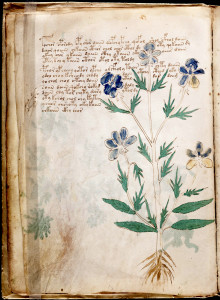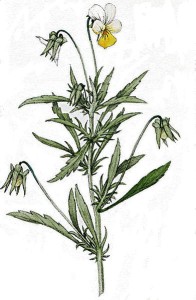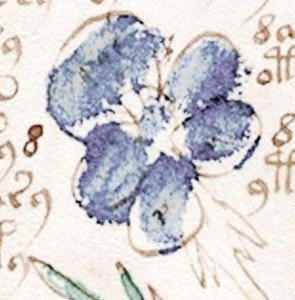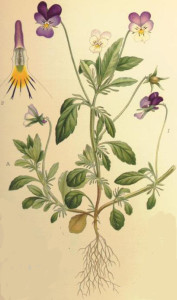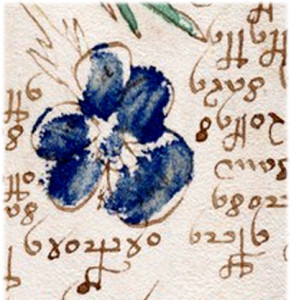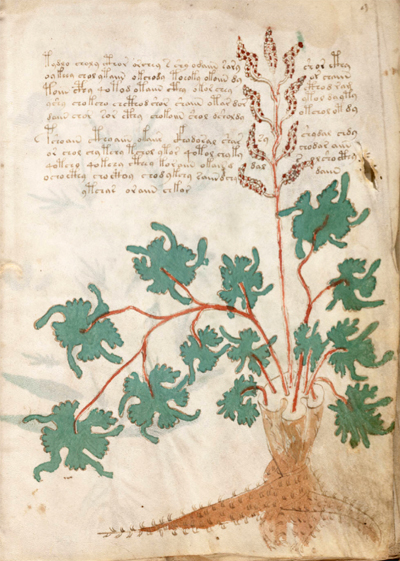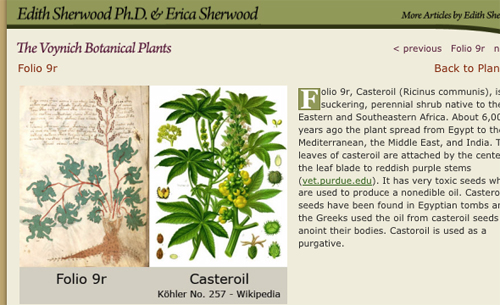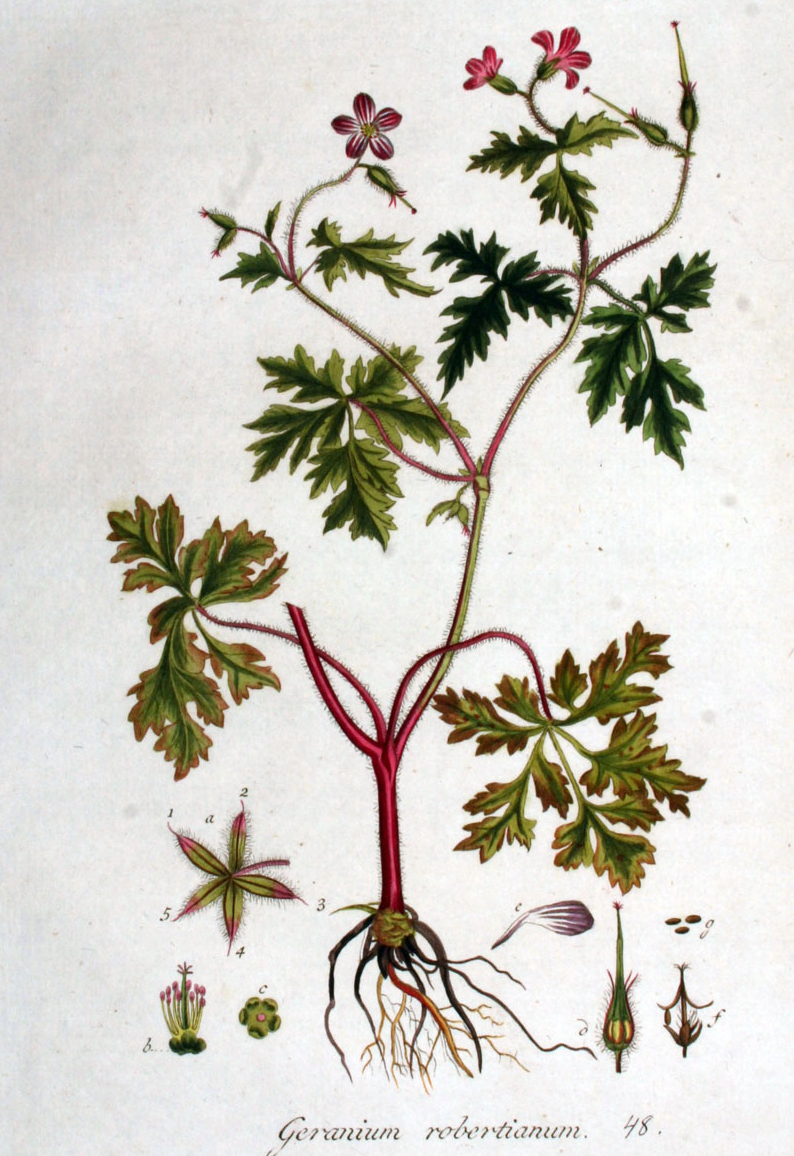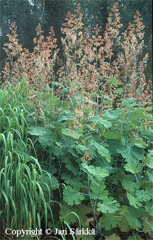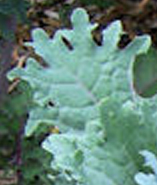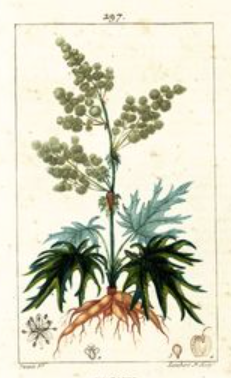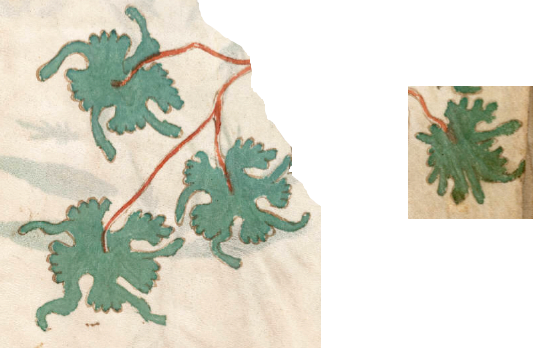The Pot-Bellied Plant
 As odd as it may seem, with its strange shapes and big round belly, I consider this one of the more easy-to-identify plants. The flowers, leaves, and root are pretty accurate with the exception of the color of the flower sheaths (perhaps the blue is used here to indicate shadows).
As odd as it may seem, with its strange shapes and big round belly, I consider this one of the more easy-to-identify plants. The flowers, leaves, and root are pretty accurate with the exception of the color of the flower sheaths (perhaps the blue is used here to indicate shadows).
Plant 13r is a little stubbier than some of the VMS plants—it doesn’t quite stretch to the top of the page. In fact, the whole plant has a jolly, rounded look to it.
There is a clump of flowers at the top similar to the blooms on a plant called “pussytoes” (Antennaria) except that the VMS flowers are colored dark blue and a grayish brown and the sheath extends farther up around the flowers than Antennaria. Note the little dots across the tops, indicating their texture and relative flatness (pussytoes are more rounded and do not typically have fat roots or ovate leaves).
Below the flower stalk is a mat of rounded two-tone leaves with fine serrations and a number of larger slits (the kind of notches one often sees in plants that are aging).
At the base of the stems, there is a bole with a number of cut-off tops where there may have been leaves or stems in previous years and, at the bottom, there’s a big red pot-like root, tuber, or corm, with thick tendrils arcing out to the sides.
I’ve mentioned boles in a previous blog and I think one or two of the common reasons for including boles in a plant drawing might apply to Plant 13r, as well.
Prior Identifications
I didn’t even look at prior identifications for this plant. It’s like the VMS Viola or Tragopogon in the sense that it’s drawn naturalistically and is easy to recognize—it’s not likely to be very controversial. It’s a semi-aquatic plant called Petasites or “butterbur”—a cousin to Tusilago farfara (which is quite a bit smaller, and not as bushy, but is often found in medieval herbals).
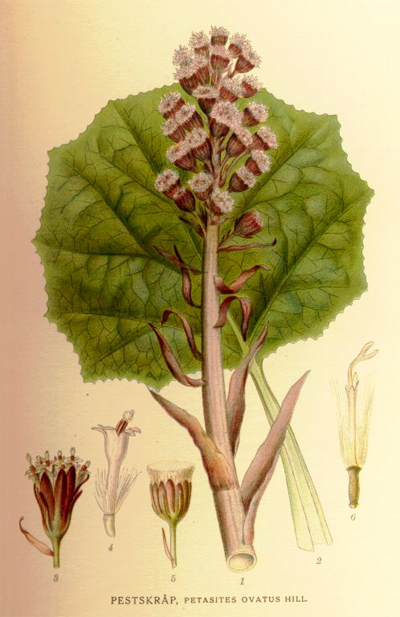 Petasites is primarily a wetland plant, in the aster family. Some species have flowers organized in tight, rounded groups like Plant 13r, others have long spikes. As the plant ages, the stalk tends to lengthen or the flowers to spread out. The VMS plant has a typical arrangement, with a cluster of small microphone-shaped fuzzy flowers that are similar to those of groundsel. They vary in color from white to pink.
Petasites is primarily a wetland plant, in the aster family. Some species have flowers organized in tight, rounded groups like Plant 13r, others have long spikes. As the plant ages, the stalk tends to lengthen or the flowers to spread out. The VMS plant has a typical arrangement, with a cluster of small microphone-shaped fuzzy flowers that are similar to those of groundsel. They vary in color from white to pink.
The leaves can vary. They may be sagittate (spear- or shield-shaped), or shaped like the wings of moths, indented like maple leaves, or rounded, like the VMS plant. Those that are rounded have finely toothed leaf margins.
Of the various species, the leaves of Petasites ovatus, Petasites vulgaris, Petasites hybridus and Petasites amplus probably resemble the VMS leaves most closely. When they first emerge, the leaves of these species are fairly round. As they grow and age, some become more shield-shaped, and the edges start to ruffle and tear. P. ovatus (as its name implies) tends to retain its rounded shape (see right).
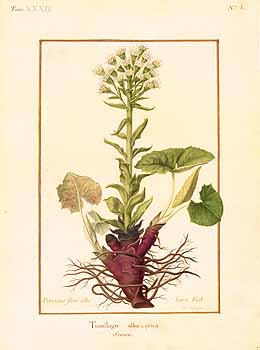 Many of the larger Petasites species have a thick swelling where the stalk connects to the root and red roots are not uncommon (see left). The size of the root depends partly on the habitat.
Many of the larger Petasites species have a thick swelling where the stalk connects to the root and red roots are not uncommon (see left). The size of the root depends partly on the habitat.
You’ll notice that the VMS plant is painted with two-toned leaves, green on one side, brown on the other. Two-toned leaves are not uncommon in Petasites. For example, Petasites albus has leaves that are green on the top and distinctively white on the underside,
The uses of the plant are twofold: the roots of certain species were considered medicinal in medieval times and are still sold for their flavonoids, alkaloids, and other components. Flowers and young shoots are sometimes cooked and eaten.
Common names for the species with more rounded leaves include butterbur, bog rhubarb, devil’s hat, pestilence-wort, and umbrella plant.
There’s nothing really mysterious about this plant except that it shows up less often in medieval herbals than its smaller cousin colt’s-foot (Tussilago farfara).
J.K. Petersen
© Copyright 2013 J.K. Petersen, All Rights Reserved
This article was originally posted July 2013, put back in draft mode a couple of weeks later, and made live again in August 2017. I have not changed any of the text or illustrations. Like the VMS viola, it’s a straightforward ID that was probably made long before I started identifying VMS plants (late 2007, 2008, early 2009), and probably after, as well. I’m more interested in the plants that are difficult to identify, particularly those with symbolic components.

